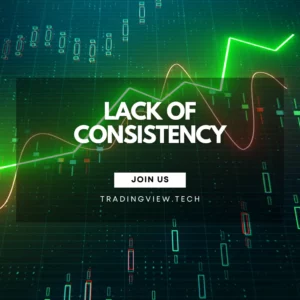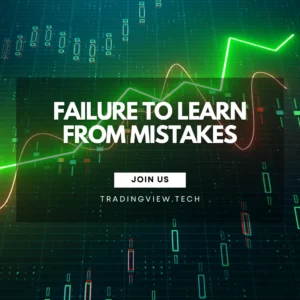One of the most common yet underestimated problems in the trading world is the rush to participate without first understanding what trading truly entails. Many new traders dive into the markets with unrealistic expectations, driven by the allure of quick profits and success stories that flood social media platforms. On Instagram, TikTok, and YouTube, it’s not hard to find influencers flaunting screenshots of winning trades, luxury cars, and exotic vacations, all supposedly funded by trading profits. These portrayals often exclude the years of learning, the losses, and the mental strain that come with trading — if they’re even real to begin with.
The idea that anyone can turn a small deposit into a fortune overnight is deeply rooted in a “get-rich-quick” mentality. This belief system is particularly appealing to those looking for a way out of financial hardship or dissatisfaction with traditional jobs. Trading, presented as a shortcut to wealth and freedom, becomes a magnet for the underprepared. The entry barrier appears low — all you need is an internet connection and a trading app. But what’s not obvious is the high price of ignorance.
Many traders start without even knowing the difference between investing and trading, or between long-term strategies and short-term speculation. They might not understand how different markets behave (stocks, forex, crypto, etc.), or how global news and economic indicators impact asset prices. They may rely entirely on signals from others or copy trading platforms, never questioning the rationale behind the decisions.
Another factor contributing to this knowledge gap is the gamification of trading platforms. With sleek mobile apps, colorful charts, and instant feedback, trading can feel more like a game than a financial operation. This illusion of simplicity hides the complex and often unpredictable nature of market behavior, creating a false sense of confidence among beginners.
The result is a large population of traders who know how to open and close positions but lack the underlying skills to do so wisely. Without a basic understanding of technical analysis, market psychology, or economic trends, they are effectively gambling — not trading.
Consequences of Trading Without Understanding
The consequences of entering the markets without proper knowledge can be devastating — financially, emotionally, and psychologically. One of the first things inexperienced traders face is emotional decision-making. Without a framework to understand market movements or a strategy to follow, traders rely on gut feelings, rumors, or the fear of missing out (FOMO). This often leads to impulsive trades, panic selling, or revenge trading after losses — all of which amplify risk rather than control it.
Another common consequence is poor risk management. Many novice traders fail to use stop-loss orders or proper position sizing, and often allocate a large portion of their capital to a single trade. When they don’t understand concepts like drawdown, margin, or leverage, they unknowingly expose themselves to massive losses. Even a few bad trades can wipe out an entire account, not because of bad luck, but because of bad planning.
Overleveraging is another critical issue. Leveraged trading — especially common in forex and crypto markets — allows traders to control large positions with relatively small deposits. While this can increase profits, it magnifies losses just as quickly. Inexperienced traders often see leverage as a way to fast-track profits without realizing that the risks grow exponentially. When trades go against them, their positions can be liquidated before they have a chance to react.
Then there’s the misinterpretation of market signals. Many traders jump into technical analysis without understanding how to use it properly. They might place trades based on a single indicator without confirming it with broader context or supporting data. Others misread news events or economic reports, making decisions based on incomplete or misunderstood information. This lack of comprehension leads to inconsistent results and a fragile mindset.
Lastly, there’s the emotional toll. Repeated losses without understanding the reasons behind them can lead to frustration, burnout, and loss of confidence. Some traders keep trying, repeating the same mistakes in hopes of different outcomes — a cycle that can be financially and emotionally draining. Others quit trading altogether, discouraged and disillusioned, blaming the markets rather than their own lack of preparation.
In short, the consequences of trading without a solid foundation are severe. It’s not just about losing money — it’s about building bad habits, developing a toxic relationship with risk, and walking away from the markets without having ever truly understood how they work.
Key Concepts Every Trader Must Know
To succeed in trading — or at the very least, to protect your capital — a foundational understanding of several core concepts is non-negotiable. These aren’t just theoretical ideas to memorize, but practical tools that shape how you make decisions in real-time market conditions. Below are the essential pillars of trading knowledge every trader must grasp before risking real money.
Market Structure
Understanding market structure is fundamental. This includes the basic mechanics of how markets move — trends (uptrend, downtrend, consolidation), support and resistance levels, and the formation of price patterns. Market structure tells you where the price has been and gives clues about where it might go next. Recognizing whether a market is trending or ranging helps traders decide on the right strategy: trend-following or mean-reversion. Without this awareness, traders are effectively flying blind.
Order Types
Knowing how to enter and exit the market efficiently is just as important as knowing when to trade. There are several types of orders, and each serves a specific purpose. Market orders execute immediately at the current price, while limit orders allow you to specify a price level for execution. Stop-loss orders help manage risk by closing trades at predefined loss points. Understanding the strategic use of these tools can mean the difference between controlled trading and chaotic decision-making.
Volatility
Volatility refers to how much and how quickly prices move. High volatility creates more opportunities, but also higher risk. Low volatility means slower price movements, which can frustrate impatient traders but reduce the chance of sharp losses. Recognizing volatility allows traders to adjust position sizes, choose suitable instruments, and avoid overexposure during unstable periods — such as during major news releases or geopolitical events.
Risk/Reward Ratio
At the heart of professional trading is risk management. The risk/reward ratio tells you how much you stand to gain relative to how much you’re willing to lose. A simple rule is that the potential reward should always outweigh the risk, typically aiming for ratios like 2:1 or higher. Traders who ignore this and chase small profits while risking large amounts often blow up their accounts over time. Mastering this concept helps ensure long-term sustainability.
Technical Analysis
This involves analyzing price charts and patterns to forecast future movements. Key tools include trendlines, support/resistance levels, moving averages, RSI, MACD, and candlestick formations. Technical analysis helps traders identify entry and exit points based on historical data and price action. However, it’s important to understand not just the tools, but their context and limitations — no indicator works 100% of the time.
Fundamental Analysis
Especially relevant in forex, stocks, and commodities, fundamental analysis involves studying economic indicators, news events, interest rates, earnings reports, and geopolitical developments to gauge an asset’s intrinsic value. While technical analysis focuses on what is happening in the markets, fundamental analysis seeks to explain why it’s happening. A well-rounded trader should understand how interest rate hikes, inflation reports, or company earnings can influence asset prices and market sentiment.
In short, these concepts are the “language” of the markets. Without learning to speak this language fluently, traders are left guessing — and guessing is a dangerous strategy in the world of real-money trading.
Effective Learning Methods for Traders
There is no one-size-fits-all path to becoming a competent trader, but what is universal is the need for structured, consistent, and practical learning. The markets are dynamic, and learning must be continuous — a blend of theory and practice. Here’s a comparison of the most effective learning methods available to traders today:
Books
Books are a timeless resource for building deep, conceptual understanding. They’re ideal for self-paced learners and offer in-depth explanations that go beyond surface-level tips. Classics like “Trading for a Living” by Dr. Alexander Elder or “Technical Analysis of the Financial Markets” by John Murphy lay a solid foundation. Books are especially useful for learning the psychology of trading, strategy frameworks, and case studies from experienced professionals. However, they can be theoretical and may not always reflect the fast-changing nature of modern markets.
Online Courses
These range from beginner tutorials to advanced strategy breakdowns. Platforms like Coursera, Udemy, and proprietary trading academies offer structured lessons with video explanations, quizzes, and sometimes direct feedback. Online courses are ideal for those who benefit from visual and guided instruction. They allow you to progress in a systematic way and often include community access or downloadable tools. The downside is variability in quality — not all courses are created equal, and some may prioritize marketing over substance.
Webinars and Live Streams
Webinars provide a more interactive learning experience, often hosted by seasoned traders or educators. These sessions cover real-time analysis, trade breakdowns, and Q&A segments. They’re valuable for staying current with market events and learning how experienced traders think during live conditions. Many platforms also offer live trading streams, where educators explain trades as they happen — a great way to bridge the gap between theory and practice.
Trading Communities and Forums
Online communities like TradingView, Reddit’s r/Forex or r/Daytrading, and private Discord groups offer peer learning, feedback, and idea-sharing. Engaging with a community can help you stay motivated and provide multiple perspectives on the same market situation. However, traders must be careful not to fall into groupthink or blindly follow others’ trades without understanding the logic behind them.
Mentorship and Coaching
Learning directly from an experienced trader can dramatically accelerate the learning curve. A mentor can provide personalized feedback, help you develop a trading plan, and hold you accountable. They also share real-world insights that books or courses might miss. The challenge is finding a trustworthy mentor — the trading space is unfortunately full of self-proclaimed “gurus” with no real track record. Due diligence is key here.
Practice Through Demo Trading
While not a “learning method” in the traditional sense, practicing with demo accounts is an essential part of the educational process. It allows traders to apply what they’ve learned in real-time without financial risk. This is where theory meets execution. Use demo trading not just to test strategies, but to refine discipline, understand order flow, and simulate the emotional aspects of real trading.
In conclusion, the most effective learning strategy often involves a blend of these methods. Books for theory, courses for structure, webinars for real-time learning, communities for support, mentorship for personalization, and demo accounts for practical experience. The key is consistency — treating trading education as a long-term investment, not a weekend crash course.
The Role of Practice and Demo Accounts
Before risking real money in the markets, every trader should spend time practicing in a demo account. This is not just a safety net — it’s an essential training ground where skills are built, strategies are tested, and mistakes are made without financial consequences. Demo trading bridges the gap between theory and real-world application, turning passive knowledge into active competence.
Simulation trading provides access to real-time or historical market data using virtual capital. Traders can practice placing orders, adjusting position sizes, setting stop-losses, and analyzing charts under real market conditions. This experience helps new traders understand how fast markets move, how prices react to news, and how different strategies perform over time. Most importantly, it allows them to make mistakes — and learn from them — in a safe environment.
However, the real value of demo trading comes when it’s taken seriously. Many beginners treat demo accounts casually, making reckless trades simply because no real money is at stake. This leads to the development of poor habits that carry over into live trading — such as overtrading, ignoring stop-losses, or chasing losses. To gain the full benefit, traders must approach demo trading with the same discipline and mindset they would use in a real-money account.
Here’s how to do that:
- Set realistic starting capital: Use an amount in your demo account that reflects what you actually plan to deposit later. Practicing with $100,000 in fake money when you’ll be starting with $1,000 creates a false sense of security.
- Follow a strategy: Don’t trade randomly. Apply a specific approach — technical, fundamental, or hybrid — and track your results.
- Keep a journal: Record your trades, the reasoning behind them, the outcomes, and what you learned. This practice builds self-awareness and helps identify patterns in behavior and performance.
- Treat losses seriously: Reflect on each losing trade as if it were real money lost. This reinforces good habits like risk management and emotional control.
- Simulate the psychological pressure: While demo accounts can’t replicate the full emotional intensity of real trading, try to create accountability — perhaps by sharing your progress with a community or mentor.
As you become more consistent and confident in a demo environment, you can transition to live trading gradually. Many traders start with micro or nano accounts, where they trade small amounts of real capital to test their discipline under real financial pressure. This hybrid approach — starting in demo, progressing to small live trades — is one of the most effective ways to grow as a trader while minimizing early losses.
In summary, demo accounts are not just for “trying out the platform.” They are for practicing execution, testing strategies, building confidence, and preparing psychologically. The traders who succeed are usually the ones who took their practice just as seriously as their real trading.
Building a Personal Trading Knowledge Plan
Learning to trade is a journey that requires structure, self-discipline, and long-term thinking. Without a clear plan, it’s easy to get overwhelmed by the flood of information available online or fall into the trap of jumping from one strategy to another without mastering any. A personal trading knowledge plan acts as your roadmap — keeping you focused, organized, and progressing steadily.
1. Define Your Trading Goals
Start by asking yourself: Why do I want to trade? Is it to build long-term wealth? To generate side income? To eventually trade full-time? Your goals will shape your time commitment, choice of markets, trading style (day trading, swing trading, position trading), and risk tolerance. Set specific, realistic milestones — for example, “Understand technical indicators within 30 days,” or “Complete 100 demo trades with a positive risk/reward ratio in 3 months.”
2. Assess Your Starting Point
Identify what you already know and what you don’t. Are you familiar with basic market concepts? Do you understand how to read charts? Can you explain risk management or trading psychology? Use this self-assessment to build a customized learning path that fills in the gaps rather than wasting time on things you already understand.
3. Choose Learning Resources
Based on your preferred learning style, select the right mix of educational content:
- Books for in-depth theoretical knowledge.
- Online courses for guided instruction.
- Webinars for live analysis and Q&A.
- Communities for support and discussion.
- Demo accounts for practice.
Prioritize quality over quantity. It’s better to fully master a few well-curated resources than to skim dozens of shallow tutorials. Always vet the credibility of content creators — avoid get-rich-quick marketers and focus on educators with proven experience.
4. Create a Study Schedule
Treat trading education like a college course or job training. Block out dedicated time in your weekly schedule — even 30 to 60 minutes a day can yield big results over time. Break your study time into focused sessions:
- Mondays: Watch one module of a course
- Tuesdays: Review chart setups
- Wednesdays: Read trading psychology chapters
- Thursdays: Backtest a new strategy
- Fridays: Journal and review the week’s trades
This kind of repetition and structure creates retention, builds discipline, and helps you stay consistent.
5. Track Your Progress
Set up a spreadsheet or journal to track what you’ve studied, what strategies you’ve tested, and how your trading is evolving. Include metrics like:
- Number of trades taken
- Win/loss ratio
- Average risk/reward
- Emotional state during trades
- Mistakes made and lessons learned
This self-feedback loop helps reinforce what works and highlights areas that need more attention.
6. Review and Adjust Regularly
Every 1–3 months, review your progress against your initial goals. Have you made consistent improvements? Where are you still struggling? Don’t be afraid to adjust your plan. Maybe you need to go deeper into psychology or start learning about fundamental analysis. Flexibility is key — but make sure you’re adjusting based on performance data, not emotional frustration.
7. Treat Learning as Ongoing
Even experienced traders continue to learn. Markets change, new tools emerge, and strategies evolve. Staying humble and curious is part of long-term success. Whether it’s through podcasts, books, new webinars, or mentoring others, find ways to keep your mind sharp and your knowledge growing.



